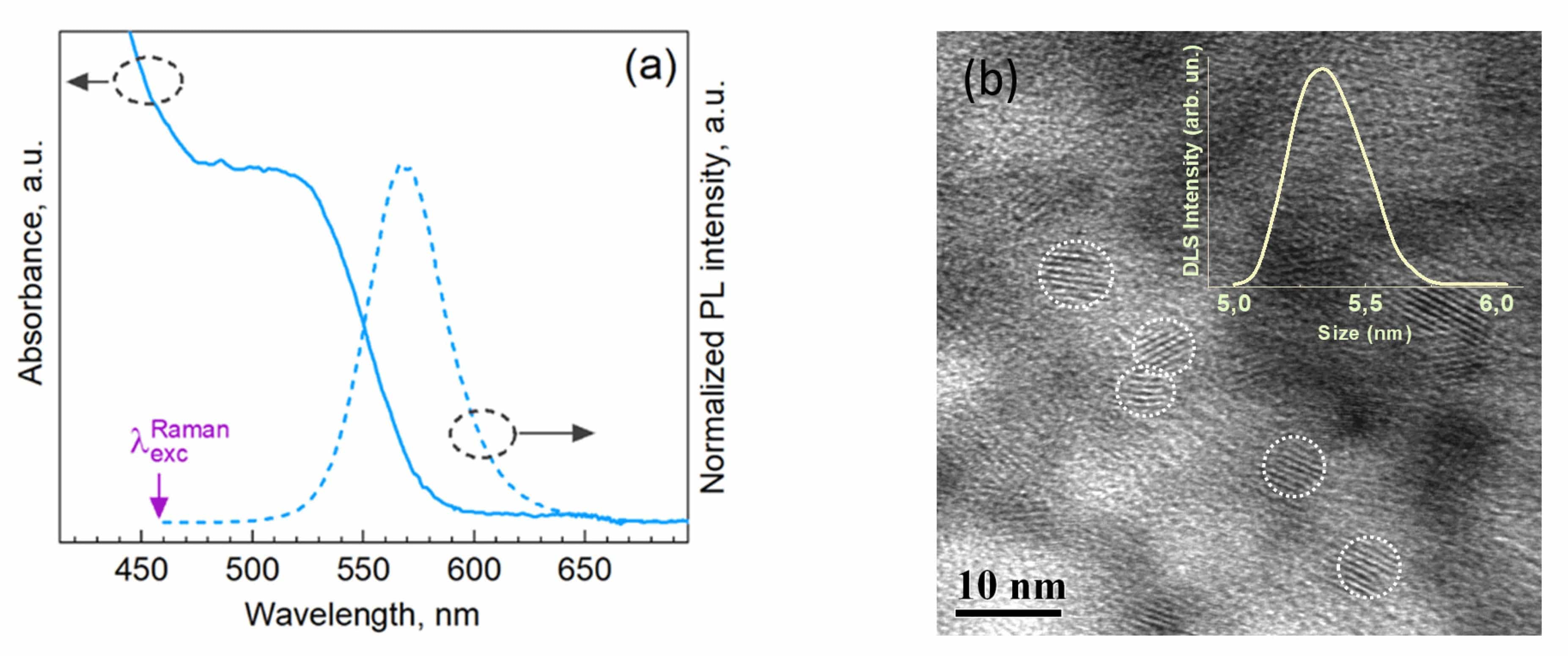Volodymyr Dzhagan, Nazar Mazur, Olga Kapush, Oleksandr Selyshchev, Anatolii Karnaukhov, Oleg A. Yeshchenko, Mykola I. Danylenko, Volodymyr Yukhymchuk, and Dietrich R. T. Zahn
Published: 1 March 2023 | National Academy of Sciences of Ukraine, Taras Shevchenko National University of Kyiv, Chemnitz University of Technology

Abstract
The parameters of the shell and interface in semiconductor core/shell nanocrystals (NCs) are determinant for their optical properties and charge transfer but are challenging to be studied. Raman spectroscopy was shown earlier to be a suitable informative probe of the core/shell structure. Here, we report the results of a spectroscopic study of CdTe NCs synthesized by a facile route in water, using thioglycolic acid (TGA) as a stabilizer. Both core-level X-ray photoelectron (XPS) and vibrational (Raman and infrared) spectra show that using thiol during the synthesis results in the formation of a CdS shell around the CdTe core NCs. Even though the spectral positions of the optical absorption and photoluminescence bands of such NCs are determined by the CdTe core, the far-infrared absorption and resonant Raman scattering spectra are dominated by the vibrations related with the shell. The physical mechanism of the observed effect is discussed and opposed to the results reported before for thiol-free CdTe Ns as well as CdSe/CdS and CdSe/ZnS core/shell NC systems, where the core phonons were clearly detected under similar experimental conditions.
Keywords: CdTe nanocrystals; core/shell nanocrystals; infrared absorption; Raman spectra; phonons
… Optical absorption and PL spectra were obtained using a Silver Nova 25 BWI6 spectrometer (StellarNet, Tampa, FL, USA) …





